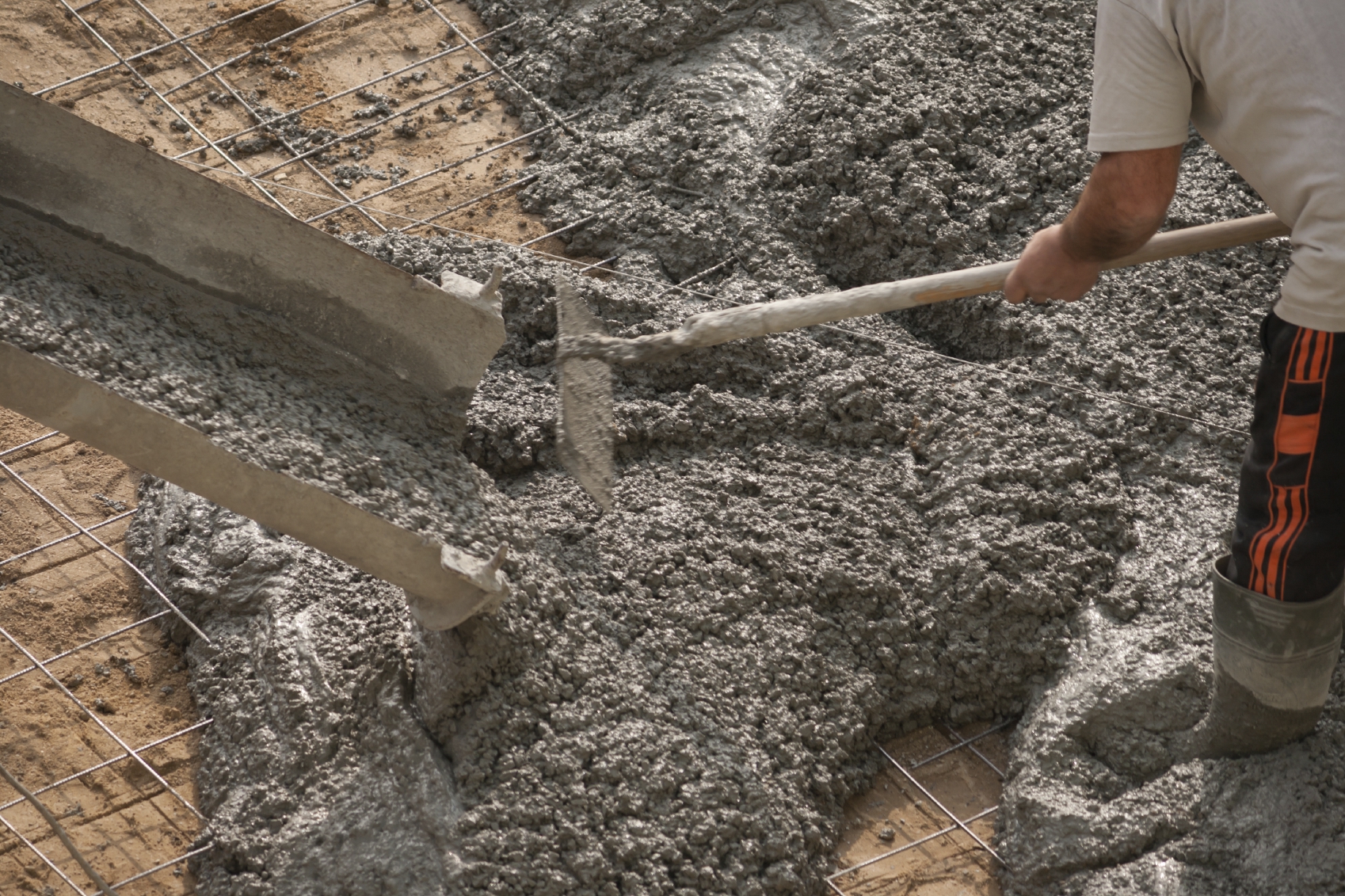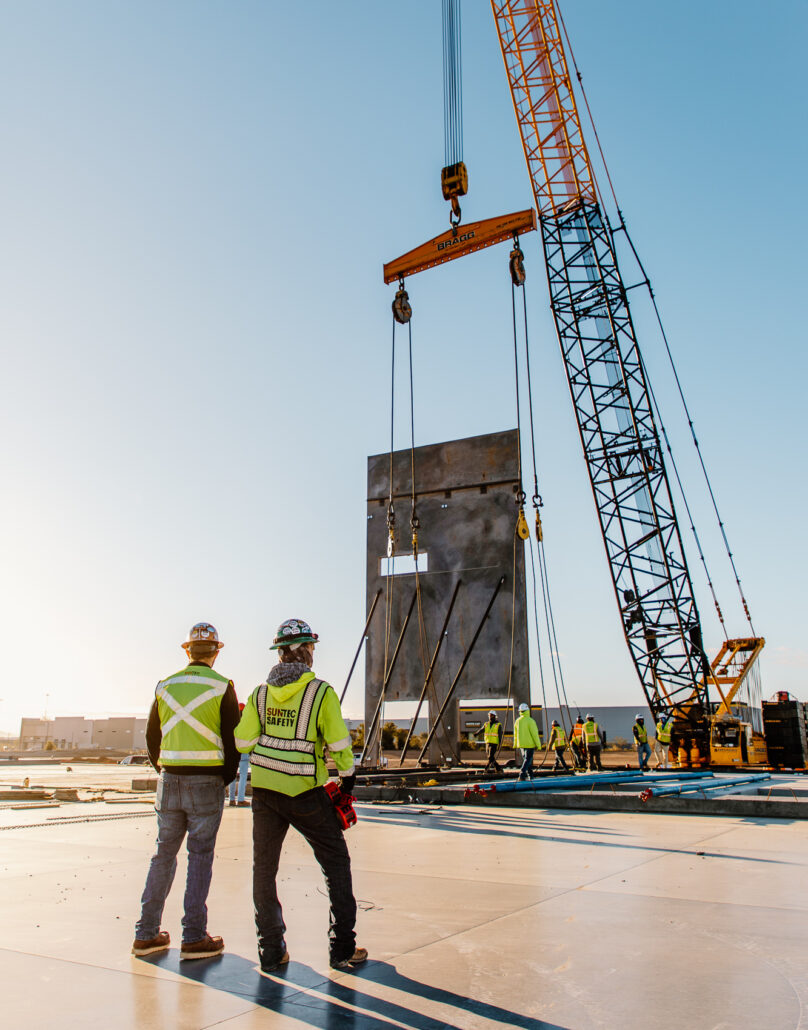West Coast General Engineering industrial concrete: Key Tips for Long-Lasting Performance in Harsh Conditions
West Coast General Engineering industrial concrete: Key Tips for Long-Lasting Performance in Harsh Conditions
Blog Article
The Necessary Duty of Concrete Foundation in Structural Integrity and Long Life
When it comes to building a building, the structure is much more essential than you may believe. Concrete foundations provide unrivaled toughness and sturdiness, ensuring your structure can withstand various environmental challenges. Without a strong base, you risk potential concerns like shifting or splitting, which can compromise security and value. Recognizing the subtleties of concrete structures could be the trick to protecting your financial investment for many years ahead. What should you think about next?
Understanding the Importance of Concrete Foundations
Concrete foundations are vital to the total security of any type of structure, as they give the vital assistance needed to endure numerous lots and environmental problems. When you consider building a home or an industrial space, the foundation is the initial point you ought to take into consideration. It functions as a barrier against wetness, safeguarding your residential property from water damages. A well-placed concrete foundation additionally stops settling and moving, which can result in cracks in walls and floors. You'll desire to guarantee that the foundation is correctly developed and strengthened, as this affects the long life of your building. Additionally, a strong structure can boost power efficiency by minimizing air leaks. Remember, overlooking the importance of a concrete structure can cause pricey repairs down the line. Investing in a quality structure upfront is vital for the honesty and durability of your structure.
Benefits of Concrete Structures for Architectural Stability
While many elements contribute to a structure's structural honesty, concrete structures provide unrivaled toughness and strength. You'll value that concrete can hold up against extreme climate condition, resisting both dampness and temperature changes. This strength indicates your structure is less likely to experience fracturing or shifting over time, which can jeopardize its safety.Additionally, concrete's integral weight gives a solid base, avoiding motion throughout all-natural occasions like earthquakes or floodings. When you pick a concrete foundation, you're additionally going with reduced maintenance; unlike wood, it won't rot or bring in insects, conserving you time and money in repairs.Moreover, concrete's fire resistance offers added security, ensuring your structure can sustain heats without significant damages. In general, spending in a concrete foundation suggests you're prioritizing the lasting stability and honesty of your building, making it a wise choice for any type of construction job.
Usual Sorts Of Concrete Foundations
When it pertains to developing structures, recognizing the common kinds of concrete foundations can help you make educated selections for your project. One of the most common kinds consist of slab-on-grade, crawl room, and full basement foundations.A slab-on-grade foundation is a straightforward, cost-effective choice, where a thick concrete piece is poured straight on the ground. This kind functions well in warm environments, as it lessens heat loss.Crawl space structures raise the home somewhat over ground, permitting air flow and access to pipes and electric systems. This design can help avoid dampness issues.Full cellar foundations use extra living or storage space while providing superb architectural assistance. They call for more excavation and are typically made use of in chillier climates to avoid frost heave.
Variables to Think About When Designing a Concrete Structure

Best Practices for Installing Concrete Foundations
When you're setting up a concrete foundation, correct site preparation is vital to guarantee stability (West Coast General Engineering Concrete). You'll likewise need to comprehend reinforcement methods to boost stamina and toughness. Don't overlook the healing procedure, as it plays a fundamental duty in accomplishing a strong foundation.
Site Prep Work Value
Although it may appear uncomplicated, correct site preparation is essential for ensuring a solid and durable concrete foundation. Begin by removing the location of any particles, plant life, or organic product that could endanger the structure's integrity. Next off, examine the dirt type and compaction; you could require to dig deep into or include materials to create a secure base. Level the ground to assure also weight distribution and stay clear of settling concerns later on. Installing proper drainage systems is also necessary to prevent water build-up, which can damage the structure gradually. Mark out the structure's measurements properly to lead the pouring procedure. By adhering to these steps, you'll establish the stage for an effective concrete foundation that stands the test of time.
Reinforcement Methods Discussed
As soon as the site is effectively prepared, the next action in guaranteeing a sturdy concrete foundation involves carrying out efficient reinforcement techniques. You need to start by utilizing steel rebar, which gives tensile toughness and helps avoid splitting. Lay the rebar in a grid pattern, seeing to it it rises using spacers to keep proper insurance coverage. Furthermore, think about utilizing cable mesh for added support, especially in areas based on hefty loads. Don't forget to link the rebar crossways securely with wire. For larger structures, fiber support can boost longevity, lowering the risk of contraction cracks. Constantly adhere to local building regulations and standards to ensure conformity. By using these support methods, you'll substantially increase your foundation's stamina and durability, laying a solid groundwork for your framework.
Treating Refine Essentials
To guarantee your concrete foundation cures properly, it's important to keep ample wetness and temperature problems instantly after pouring. Begin by covering the surface with a wet burlap or plastic sheet to preserve wetness. This keeps the concrete hydrated, protecting against fractures and making certain strength. You must likewise keep track of the temperature; optimal curing problems are in between 50 ° F and 90 ° F. If it's too warm, haze the surface on a regular basis to avoid rapid dissipation. For cool weather condition, think about making use of insulating coverings to keep heat. Go for a treating period of a minimum of seven days, as this is important for optimum stamina growth. By adhering to these finest techniques, you'll boost your foundation's longevity and durability, making certain structural stability for years to find.
Upkeep of Concrete Foundations for Longevity
To keep your concrete structure strong and enduring, routine evaluations are essential. You must also guarantee effective drain services remain in place to avoid water damage. If you detect any cracks, resolving them promptly will conserve you from bigger problems down the line.

Normal Assessments and Analyses
While routine inspections and analyses might look like a job, they're crucial for maintaining the stability of your concrete foundation. By consistently examining for fractures, shifts, or signs of wear, you can catch possible concerns prior to they escalate into expensive repairs. Seek any kind of water merging around the foundation or uncommon settling, as these can signal underlying issues. It's likewise important to monitor any type of modifications in your home's framework, like doors that stick or home windows that don't open efficiently. Maintaining a record of your evaluations assists track adjustments in time, permitting proactive upkeep. Inevitably, these assessments ensure your structure stays secure, supporting the long life and safety of your whole structure. Don't forget this critical aspect of homeownership!
Effective Water Drainage Solutions
Normal evaluations can expose problems like drain issues that might jeopardize your concrete foundation's stability. To avoid water build-up, guarantee your rain gutters and downspouts straight water away from the structure. Installing French drains can efficiently reroute surface area and groundwater, minimizing pressure on your foundation wall surfaces. Additionally, rating the soil around your home helps ensure that water streams away, instead than merging near your foundation.Consider using sump pumps in locations vulnerable to flooding, as they actively remove excess water. Regularly examine for clogs in drainage systems and clear them quickly. You'll safeguard your foundation's stability and long life by taking these aggressive steps. Bear in mind, effective water drainage options are crucial for preserving a strong, durable concrete structure.
Prompt Crack Repair Works
When you discover cracks in your concrete structure, resolving them quickly is vital for maintaining its longevity. Little splits can quickly develop right into larger problems, endangering the structural stability of your home. Consistently examine your foundation for indicators of damages, such as horizontal or upright cracks. If you find any type of, don't wait-- fix them instantly. You can utilize epoxy injections or concrete patching substances, which work for sealing fractures. Constantly adhere to the maker's guidelines and consider seeking advice from a professional for significant damages. Keep in mind, timely repairs not just boost your structure's sturdiness but also conserve you cash in the future by protecting against more comprehensive repairs down the line. Keep proactive, and your structure will certainly continue to be strong and safe.
Dealing With Typical Concerns With Concrete Foundations
Concrete foundations can deal with numerous problems in time, making it vital to determine and address them without delay. Among one of the most typical problems is fracturing, which can happen due to temperature fluctuations or resolving dirt. If you discover fractures, it's necessary to analyze their size and depth; tiny cracks can usually be sealed, while bigger ones might need professional evaluation.Water invasion is another major concern. Excess wetness can bring about mold and mildew growth and structural deterioration. Assurance correct drainage around your foundation to reduce this threat. In addition, seek indications of changing or bowing walls, as this can suggest underlying problems with your foundation's stability.Regular evaluations are fundamental to catch these issues early. If you identify any type of concerning indicators, do not wait to speak with a foundation professional. By remaining positive, you can keep the integrity and long life of your concrete foundation, ensuring your home remains secure and secure.
Frequently Asked Inquiries
Just How Does Dirt Type Impact Concrete Foundation Efficiency?
Dirt type considerably affects concrete structure efficiency. If you have actually obtained extensive clay, for circumstances, it can create changing and breaking. Sandy soil may result in clearing up. Comprehending your dirt helps assure a steady foundation.
Can Concrete Foundations Be Repaired if Damaged?
Yes, you can repair damaged concrete foundations. Relying on the degree of the damages, techniques like epoxy injection or slab jacking can recover stability. It's best to speak with a specialist for efficient services.
What Is the Normal Life-span of a Concrete Foundation?
A concrete foundation commonly lasts 30 to more info 100 years, depending upon elements like dirt conditions, environment, and maintenance. You'll wish to watch on it to assure it continues to be healthy throughout its life-span.
Exist Alternative Materials to Concrete for Foundations?
Yes, there are choices to concrete for foundations, like steel, timber, and even recycled products. Each option has special benefits and downsides, so you must consider your task's certain needs when picking the right material.
Just How Does Climate Effect Concrete Structure Durability?
Environment significantly affects concrete structure sturdiness (West Coast GE Concrete contractors). Extreme temperatures, dampness, and freeze-thaw cycles can compromise the product, leading to fractures and architectural issues. You need to think about local environment problems when intending your foundation to ensure long-term performance
Report this page